Robert Leeson: Radical Writer
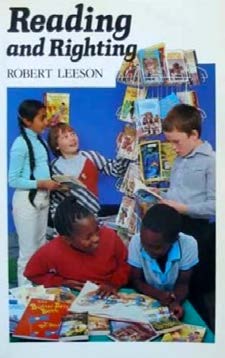
Ann Lazim
In May 2014 I chaired a panel at the Radical Book Fair in London entitled ‘Where Are All The Little Rebels?’, which considered what makes a radical children’s book.
The members of the panel were Kim Reynolds, also a contributor to this issue of IBBYLink, and writers Catherine Johnson and Alan Gibbons. The session was organised with the collaboration of Letterbox Library in memory of Robert Leeson, and his daughter Christine was in the audience. When I first joined IBBY in the 1970s, Bob was the treasurer of the British Section and I remember him as a very welcoming presence at meetings and events and how pleased he was when we revived the section in the 1990s. In 1985 he was given the Eleanor Farjeon Award, specifically for his reading and writing workshops in schools and for his fundraising for the Third World Book Fund, which was linked with IBBY, to supply schools and libraries with books. That year he also became chair of the Writers’ Guild and his obituary on their website describes him as ‘a versatile, pioneering children’s author’.
A symposium was organised in June 2019 at the University of East London marking 34 years since the publication of Robert Leeson’s Reading and Righting; The Past, Present and Future of Fiction for the Young, where he called for a more socially and culturally representative children’s literature. His critical work in this volume and elsewhere on the lack of inclusivity in children’s literature was influential and he addressed this in his own fiction.
Leeson was literary editor of the Morning Star, demonstrating his commitment to left-wing politics. His earliest books were for adults and were about the labour and trade-union movement. They included Strike, a compilation of personal accounts from 1887 to 1971 exploring the effects of strikes from the viewpoints of those who took part in them, and Travelling Brothers, a history of trade unions and their forerunners.
An author of more than 70 books for children, he began writing for children at a time of increasing awareness of issues around race, sex and class in children’s literature and was a significant contributor to the debate about this. In ‘What Were We Arguing About?’ originally published in Signal and reprinted in Children’s Books and Class Society Past and Present he wrote:
My chief ambition since I began to write children’s books, and many years before that, was to write books in which ordinary children – children from working-class homes, from the estates, from a background like my own – might recognise themselves, yet feel the vicarious excitement for which convention deems characters from a class apart to be necessary. For I believe that only when we have a body of literature which truly reflects its own readership, in realist and escapist terms, can we say we are not concerned with class any more, but only with people.
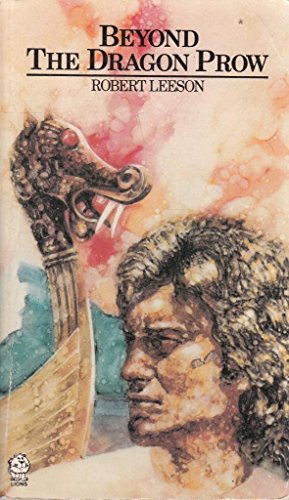
In another essay in the same pamphlet (one of a short series published by the Writers and Readers Co-operative and edited by the Children’s Rights Workshop who published a journal Children’s Book Bulletin and organised the Other Award of which Leeson was on the judging panel) he said of class bias in children’s literature:
It is not too much to claim that radical writers who have in mind the needs and aspirations of ordinary people today really set going the transformation of the historical and adventure novel and continue to enlighten it today.
The earliest of his own novels have historical themes and the publication of these became increasingly interspersed with stories with contemporary settings featuring children with working-class backgrounds. His first novel, Beyond the Dragon Prow, set in the Viking era, features characters who have disabilities. While some of the terminology used would not be acceptable now (the main character is described as a ‘cripple’), Leeson clearly intended that Stiglaf and his companions should have agency in their own lives and that of their communities.
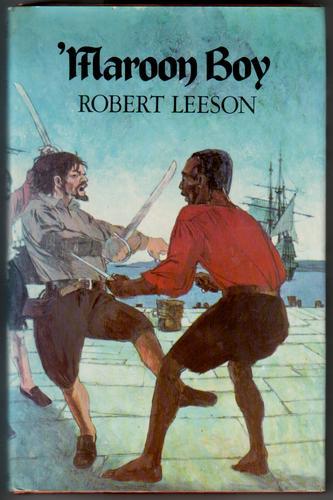
Leeson subsequently wrote an historical trilogy about the Cimaroons who escaped slavery, beginning in the mid-sixteenth century with ’Maroon Boy, continuing into Jacobean times with Bess and ending with The White Horse (1640s–1660). He also wrote a non-fiction book for children The Cimaroons. Of the dilemmas to be addressed in creating historical fiction he wrote in Children’s Literature in Education:
In each story I have tried to represent background, particularly social and economic, as accurately and realistically as my understanding of the period can manage. But my preoccupations have been 20th-century ones, the fight against the oppression of black people, of women, of working people. How far do these belong to a bygone age, how far can sentiments to which we have become so accustomed that some people think they belong only to our age, find their place in the thoughts and hearts of a time, which all exterior evidence seems to suggest is so different in its actualities and possibilities from our own?
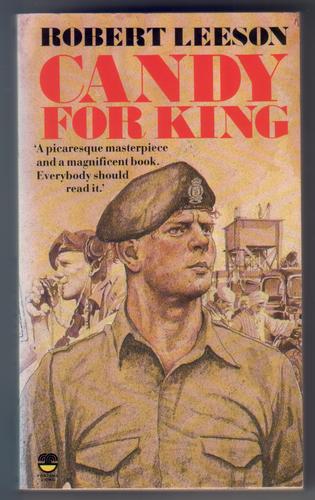
Candy for King, set in the 1950s, presumably draws on Leeson’s own National Service experience in the army in Egypt. It’s the story of soldier Candeford Kitchener who is sent to ‘Sharabia, that middle eastern outpost of the free world’. Candy believes it is his ‘duty to make friends with the Sharabian people, to be an ambassador for the English way of life.’ He takes the former duty more seriously than any of his compatriots, and improves conditions for the Sharabians working on the camp, becomes ‘a guest in many houses in El Shibbuk at the weekends’ and learns their language. After he has been accused of starting a local revolt, the truth about his parentage emerges. The language in which this is revealed to him by Captain Farleigh is no doubt accurate but is used without qualification – in particular, the way the soldiers speak about the local ‘Sharabian’ women is brutal – and readers need to be capable of reading against the text during these passages and to be questioning throughout the novel.
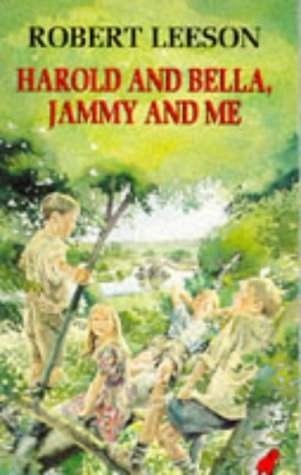
There is a much gentler tone in Harold and Bella, Jammy and Me, set immediately before the Second World War, a period coinciding with Leeson’s own childhood. Most chapters are concerned with a story about an individual child or local character in a working-class community in a small northern town, seen through the eyes of the narrator.
The Third Class Genie, which introduces elements of fantasy into a contemporary school story, is one of the best known of Robert Leeson’s books, originally published in 1975 and issued in a 25th anniversary edition as a Collins Modern Classic with an afterword by the author.
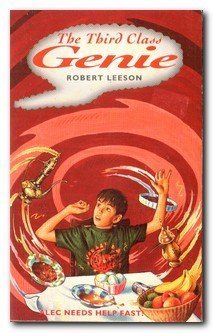
There were also two sequels Genie on the Loose and The Last Genie. The novel demonstrates the author’s questioning of the way history is conventionally taught in Britain. When Abu, the genie who modern-day Alec has released from a beer can, helps him reconstruct a homework project on the Crusades, he gives the Saracen angle on events. Alec is accused by his teacher of ‘rewriting history’. Leeson uses humour in a thought-provoking way to question from whose point of view history is being told and, in the process, whether there can be one historical ‘truth’. Another teacher compliments Alec on his interest in Arabian history, commenting that, following some years serving in the forces in the Middle East, he ‘came to realize that the Arabs have a quite different view of history from ours.’ The story also encompasses issues around racism, Abu is seen as an ‘illegal immigrant’, and gentrification – working-class families are going to be moved out of their area to make way for new ‘executive’ flats. Not only did the content of The Third Class Genie enable children from a working-class background to ‘see themselves in a book’, it was also affordable as it was one of the first children’s books to be published as a paperback original at 30p a copy.
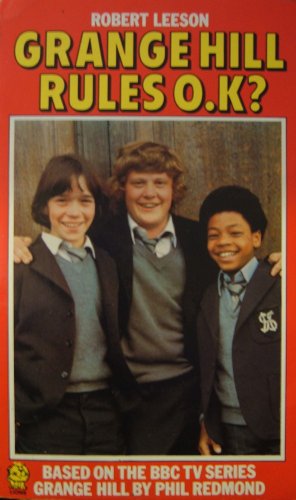
Grange Hill was a ground-breaking TV series set in a comprehensive school that started in 1978. Leeson wrote several popular novels based on the characters and setting of the series, creating his own original stories rather than basing them on the TV scripts. In addition to providing challenging and realistic content, Grange Hill was an important element in tipping the balance away from fiction set in boarding schools.
Robert Leeson experimented with language and form as well as content in his fiction.
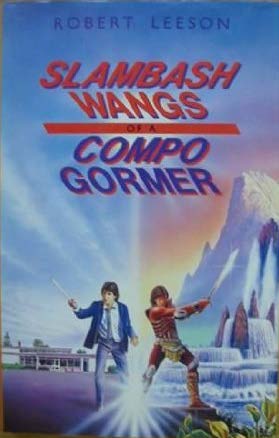
Slambash Wangs of a Compo Gormer was nominated to the IBBY Honour List 1990 and the description in the catalogue says:
Arnold’s only reading material is fighting fantasies (Slambash Wangs). Arnold invents, or thinks he does, a world called Klaptonia, and half the story takes place there. Robert Leeson has invented the whole culture and language of Klaptonia – some of the book is written in Klaptonian. This is so skilfully done that the book is easy to read in spite of the linguistic fireworks.
There is a glossary to help understanding of the text. However, the book provides a superb lesson is how contextual clues and knowledge about language enable readers to unravel meaning. One of the criteria for nomination to the IBBY Honour List is that a book is recommended for translation. It would be interesting to know whether this book was much translated and how translators dealt with the Klaptonian language!
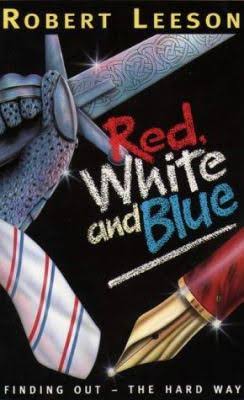
Red, White and Blue has an interesting tripartite structure. Each of the three interwoven strands is printed in a different colour as Wain writes his schoolwork in black, about his real feelings in red and a fantasy story Sylvania Quest in blue. Arthurian legend plays a part in the style of Sylvania Quest and in the narrator’s name (Wain is short for Gawain) and recurs elsewhere in Leeson’s work. An episode in Harold and Bella, Jammy and Me has the protagonists wondering if they have found the sleeping King Arthur in a cave. For his own retelling of the legends in The Song of Arthur, Leeson goes back to early versions in which Arthur was portrayed as a warrior rather than a king and uses the bard Taliesin as narrator.

In Reading and Righting Leeson noted how the editing and refining of folk tales as they were written down lead to women’s roles becoming more stereotyped. From the 1970s onwards, a number of retellings of stories were published where what may be regarded as traditional gender roles were reversed. Alongside this there began to appear collections of less-known and rediscovered folk tales where women had strong roles. Leeson contributed to this with Smart Girls and Smart Girls Forever. These were reissued in 2018 along with Idle Jack and Why Is the Cow on the Roof? – these four volumes, all illustrated in a humorous style by Axel Scheffler, are the only books by Robert Leeson currently in print. He also retold a selection of tales from the Arabian Nights in My Sister Shahrazad, framing and linking the stories with the words of Shahrazad’s sister Dunyazad who entered King Shahrayar’s bedchamber too.
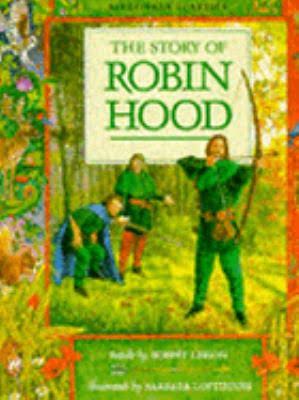
For his retellings of The Story of Robin Hood he went back to the earliest versions where Robin was a yeoman, not an Earl with a ‘fabricated noble pedigree’ with a message that ‘truth, justice and courtesy should be defended, if need be against the law, is as valid for the present as for the past.’
Robert Leeson was an important figure in the move to challenge the class bias in children’s literature and create fiction that reflects working class lives. Reading and Righting provides a useful history of British children’s literature from a radical standpoint and deserves rereading. In particular, his description of the issues raised and the battles fought around children’s literature in the 1970s is worth revisiting as a starting point to reflect on how far (or not) we have come since then.
Works cited authored by Robert Leeson/R.A. Leeson
Leeson, R.A. (1973) Strike. A Live History 1887–1971. London: George Allen & Unwin.
Leeson, Robert (1973) Beyond the Dragon Prow. London: Collins.
–– (1974) ’Maroon Boy. London: Collins.
–– (1975, 2000) The Third Class Genie. London: Collins.
–– (1975) Bess. London: Collins.
–– (1976) The Spirit of What Age? The Interpretation of History from a Radical Standpoint. Children’s Literature in Education 23 Winter issue, pp.172–182.
–– (1977) Children’s Books and Class Society Past and Present. London: Writers and Readers Publishing Cooperative.
–– (1977) The White Horse. London: Collins.
–– (1978) The Cimaroons. London: Collins.
Leeson, R.A. (1979) Travelling Brothers. The Six Centuries’ Road from Craft Fellowship to Trade Unionism. London: George Allen & Unwin.
Leeson, Robert (1980) Grange Hill Rules OK?. London: Fontana Lions.
–– (1980) Harold and Bella, Jammy and Me. London: Fontana Lions.
–– (1984) Candy for King. London: Collins.
–– (1984) Genie on the Loose. London: Hamish Hamilton.
–– (1985) Reading and Righting: The Past, Present and Future of Fiction for the Young. London: Collins.
–– (1986) The Way Ahead. Children’s Literature in Education 17(4), pp.253–260.
–– (1987) Slambash Wangs of a Compo Gormer. London: Collins.
–– (1993) The Last Genie. London: Lions.
–– (illus. Axel Scheffler) (1993, 2018) Smart Girls. London: Walker.
–– (illus. Barbara Lofthouse) (1994, 2005) The Story of Robin Hood. London: Kingfisher.
–– (1995) Red, White & Blue. London: Collins.
–– (1995, 2018) Idle Jack. London: Walker.
–– (illus. Axel Scheffler) (1996, 2018) Smart Girls Forever. London: Walker.
–– (illus. Axel Scheffler) (1999, 2018) Why Is the Cow on the Roof? London: Walker.
–– (2000) The Song of Arthur. London: Walker.
–– (illus. Christina Balit) (2001) My Sister Shahrazad. Tales from the Arabian Nights. London: Frances Lincoln.
Other works cited
Chambers, Colin (2013) Obituary: Robert Leeson 1928–2013 https://writersguild.org.uk/robert-leeson/.
Hamley, Dennis (2013) Obituary: Robert Leeson. https://booksforkeeps.co.uk/article/obituary-robert-leeson-31-march-1928-29-september-2013/.
Reynolds, Kimberley and Nicholas Tucker (eds) (1998) Children’s Book Publishing in Britain Since 1945. Aldershot: Scolar Press.
Stones, Rosemary (1988) 13 Other Years: The Other Award 1975–1987. Books for Keeps no. 53, p.22.
Ann Lazim has held various roles in IBBY UK since being part of the group that refounded the section in 1995 – secretary, chair, congress co-director – and served on the international executive 2004–2008. She gained an MA in Children’s Literature at Roehampton University in 2005. Since retiring as Literature and Library Development Manager at the Centre for Literacy in Primary Education (CLPE), where she worked for 29 years, in March 2021, she has been researching and writing in the areas of children’s literature and women’s history. Ann Lazim blogs at https://slannt.uk.
